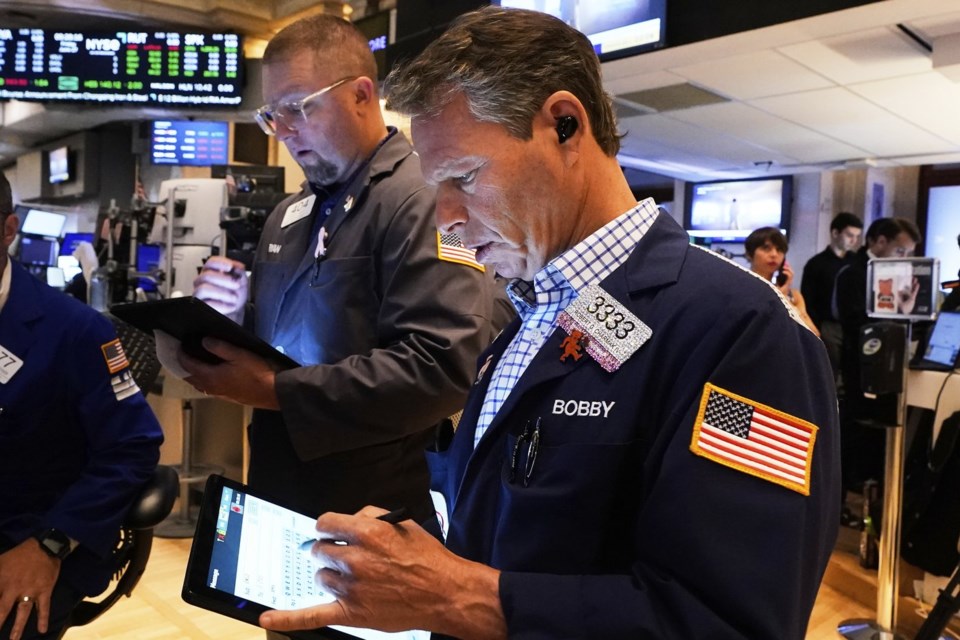U.S. stocks closed at an all-time high Friday, another milestone in the market's remarkable recovery from a springtime plunge caused by fears that the Trump administration's trade policies could harm the economy.
The S&P 500 rose 0.5%, finishing above its previous record set in February. The key measure of Wall Street’s health fell nearly 20% from February 19 through April 8.
The market's complete turnaround from its deep swoon happened in about half the time that it normally takes, said Sam Stovall, chief investment strategist at CFRA.
“Investors will breathe a sigh of relief,” he said.
The Nasdaq composite gained 0.5% and set its own all-time high. The Dow Jones Industrial Average rose 1%.
President Donald Trump’s decision Friday to halt trade talks with Canada threatened to derail Wall Street’s run to a record, but the market steadied.
The gains on Friday were broad, with nearly every sector within the S&P 500 rising. Nike soared 15.2% for the biggest gain on the market, despite warning of a steep hit from tariffs.
The broader market has seemingly shaken off fears about the Israel-Iran war disrupting the global supply of crude oil and sending prices higher. A ceasefire between the two nations is still in place.
The price of crude oil in the U.S. is mostly unchanged on Friday. Prices have fallen back to pre-conflict levels.
Investors are also monitoring potential progress on trade conflicts between the U.S. and the world, specifically with China. The U.S. and China have signed a trade deal that will make it easier for American firms to obtain magnets and rare earth minerals from China that are critical to manufacturing and microchip production, U.S. Treasury Secretary Scott Bessent said Friday.
China’s Commerce Ministry also said that the two sides had “further confirmed the details of the framework” for their trade talks. But its statement did not explicitly mention an agreement to ensure U.S. access to rare earths, and instead said it will review and approve “eligible export applications for controlled items.”
An update on inflation Friday showed prices ticked higher in May, though the rate mostly matched economists' projections.
Inflation remains a big concern for businesses and consumers. Trump’s on-again-off-again tariff policy has made it difficult for companies to make forecasts. It has also put more pressure on consumers worried about already stubborn inflation. A long list of businesses from carmakers to retailers have warned that higher import taxes will likely hurt their revenues and profits.
The U.S. has 10% baseline tariffs on all imported goods, along with higher rates for Chinese goods and other import taxes on steel and autos. The economy and consumers have remained somewhat resilient under those tariffs, though analysts and economists expect to see the impact grow as import taxes continue to work their way through businesses to consumers.
“While we also would have expected to already to be seeing a bit more pass through into the inflation statistics, we still expect these impacts to show up in a more meaningful way in the next few months,” said Greg Wilensky, head of U.S. fixed income and portfolio manager at Janus Henderson.
The threat of more severe tariffs continues to hang over the economy. The current pause on a round of retaliatory tariffs against a long list of nations is set to expire in July. Failure to negotiate deals or further postpone the tariffs could once again rattle investors and consumers.
The Federal Reserve is monitoring the tariff situation with a big focus on inflation. The rate of inflation has been stubbornly sitting just above the central bank's target of 2%. In a report Friday, its preferred gauge, the personal consumption expenditures index, rose to 2.3% in May. That's up from 2.1% the previous month.
The Fed cut interest rates twice in late 2024 following a historic series of rate hikes to cool inflation. The PCE was as high as 7.2% in 2022 while the more commonly used consumer price index hit 9.1%.
The Fed hasn't cut rate cuts so far in 2025 over worries that tariffs could reignite inflation and hamper the economy. Economists still expect at least two rate cuts before the end of the year.
Bond yields held relatively steady. The yield on the 10-year Treasury rose to 4.27% from 4.24% late Thursday. The two-year Treasury yield, which more closely tracks expectations for what the Federal Reserve will do, edged up to 3.74% from late Thursday.
All told, the S&P 500 rose 32.05 points to 6,173.07. The Dow gained 432.43 points to 43,819.27, and the Nasdaq added 105.55 points to 20,273.46.
Stocks in Europe were mostly higher, while stocks in Asia finished mixed.
Damian J. Troise And Alex Veiga, The Associated Press




